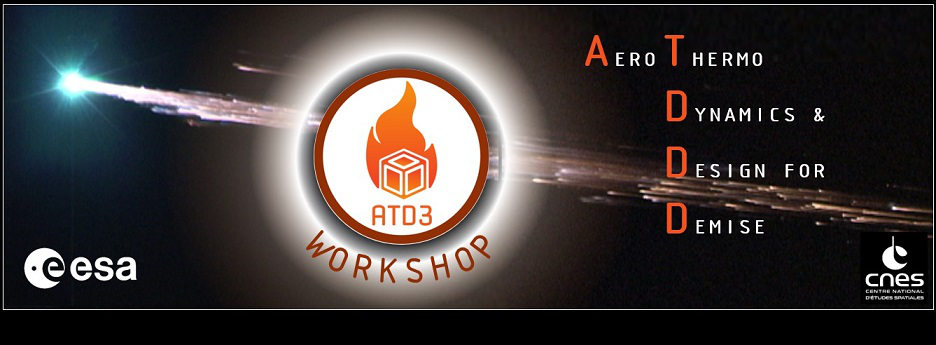Speaker
Description
Simulating destructive re-entry is a demanding task that requires the modelling of non-equilibrium and high-temperature aerothermodynamics, structural and flight dynamics in presence of interacting shock waves, structural deformation, fragmentation and intense heat and mass transfer mechanisms. Three categories of methods can be identified to model re-entry: object-oriented, spacecraft-oriented and hybrid approaches that combine some characteristics of the former two. Existing low-fidelity methods based on semi-empirical or simplified analytical assumptions lead to substantial inaccuracies and uncertainties on fragmentation occurrences and trajectory paths due to their limits in properly accounting for the effects of highly nonlinear shock waves and structural responses during the destructive re-entry process. High-fidelity methods based on Computational Fluid Dynamics and Computational Structural Dynamics are becoming more and more capable of resolving the complex multi-physics of re-entry. Unfortunately, these methods bear a rather high computational cost that makes them unsuitable to perform repetitive simulations of different scenarios like those needed in the case of design for demise.
A recent trend, supported by the continuous improvement in computational capacity, is to bring together low- and high-fidelity tools to develop a collaborative and possibly a concurrent approach where a synergy between the methods is created and exploited. The exploitation of this synergy between high- and low-fidelity methods has recently led to the formulation and implementation of data-driven Reduced Order Modelling (ROM) based on Principal Components Analysis (PCA) and/or Manifold Learning or based on Physically-Informed Neural Networks (PINN) paired with autoencoders to keep the computational cost at a low level. Existing data, like high-fidelity simulations of a given problem, can be used to create ROMs that can incorporate the nonlinear physics and provide superior accuracy when compared to standard low-fidelity methods or physically-blind approaches such as Response Surface Methods (e.g. Kriging-based RSM or equivalent methods) while retaining high computational efficiency.
This work will serve to demonstrate the potential of this ROM approach for the prediction of aerothermodynamic loads for the Automated Transfer Vehicle (ATV) in the continuum regime. TITAN (the multi-fidelity framework developed during MIDGARD), SU2-NEMO (high-fidelity aerothermodynamics for continuum regimes) and RAZOR (adaptive ROM framework) will be used for this purpose, applying the PCA-based ROM Proper Orthogonal Decomposition (POD). Quantities such as Mach, Knudsen and object attitude and orientation will be applied as relevant parameters to define the re-entry corridor in this case. This work will therefore demonstrate the feasibility of such a ROM-based approach for the fast and accurate simulation of atmospheric re-entry.

